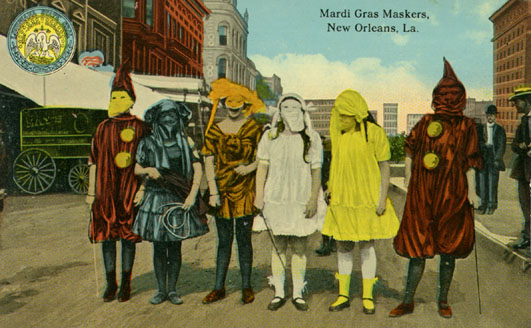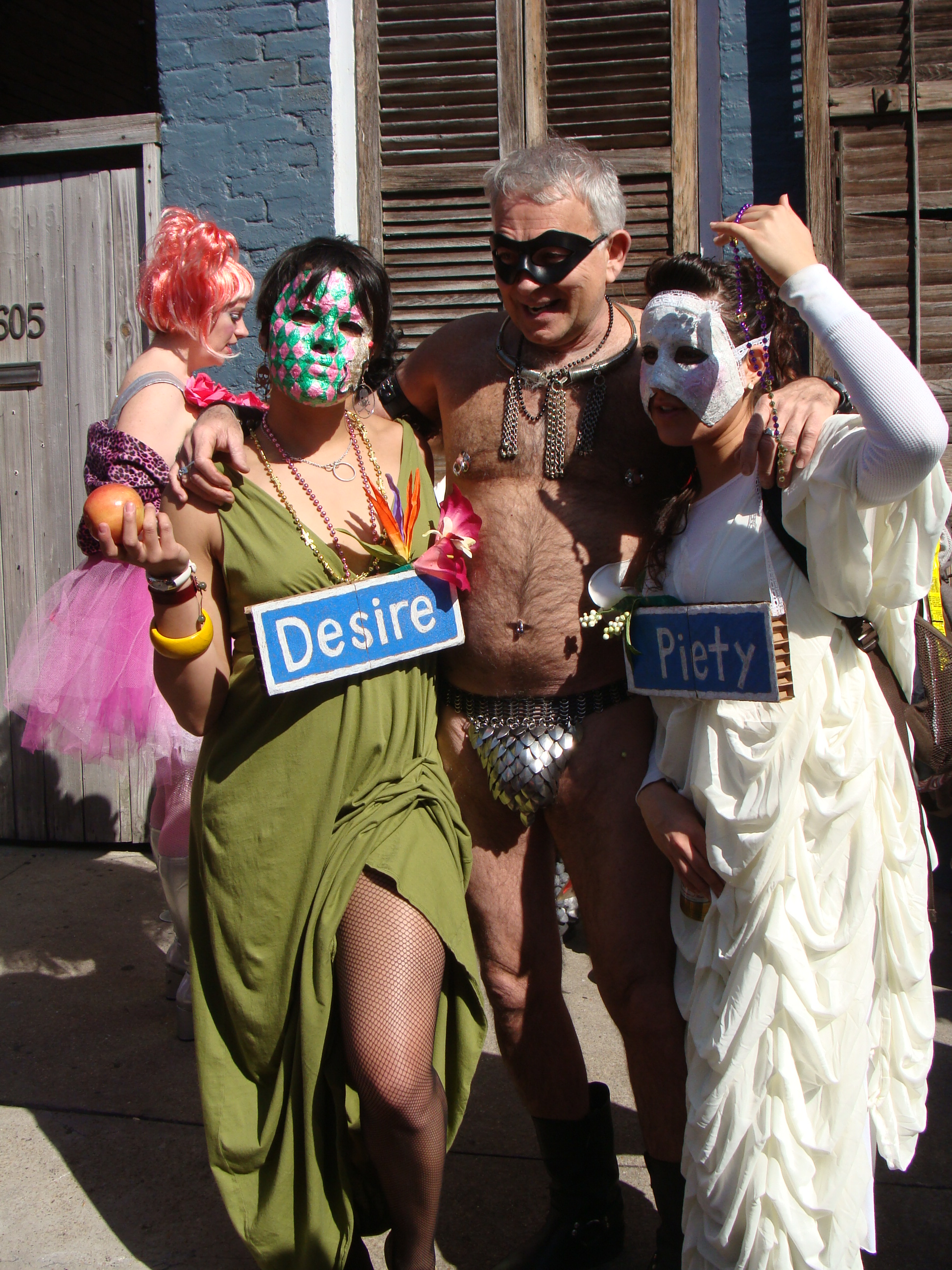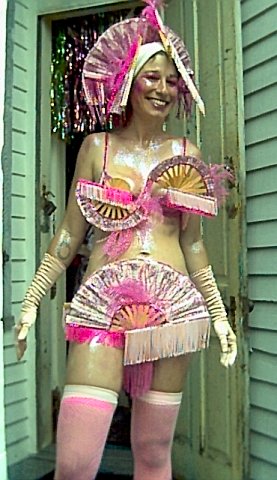Aileen Marshall
Mardi Gras this year is Tuesday, February 25th. What is Mardi Gras, you ask? Some of you readers may know Mardi Gras as Fat Tuesday or Shrove Tuesday. While it has religious origins, it has become synonymous with a big party in New Orleans, Louisiana. This holiday has evolved over millennia to become the major tourist attraction that it is today.
Some believe that its origins go back to ancient Rome. Saturnalia was a boisterous festival celebrating the arrival of spring and fertility, dating back to 131 BC. However, most of the rites of Mardi Gras can be traced back to the spread of Christianity around the world. Fat Tuesday is the day before Ash Wednesday, the beginning of the season of Lent in the Christian church. Lent is a time when followers spend days fasting, abstaining from meat, and practicing other means of personal sacrifice. Therefore, Fat Tuesday is the last day to indulge and have fun before the six weeks of Lent. The early church decided it would be easier to incorporate the tradition of Saturnalia, rather than try to prevent it.
Fat Tuesday, or Mardi Gras in French, is a day to eat a lot of rich foods, hence the name. Some places recognize a whole season called “Carnival”. This stretches from the Epiphany, or Three Kings Day, on January 6th, until Fat Tuesday. The word carnival derives from the Latin carnelevarium meaning to take away meat. The word “shrove” in Shrove Tuesday derives from the word shrive, meaning to absolve.
While these festivities started out as religious practices, Carnival and Mardi Gras were gradually adopted as secular celebrations. They are celebrated in various ways around the world. In some countries in Europe, Latin America, and the Caribbean it is traditional to eat rich fried pastries and pancakes, so the holiday there is called Pancake Tuesday. In Belgium, people dance throughout the city of Binche all day. This Carnival of Binche is recognized by UNESCO, as are the door-to-door processions in the Czech Republic. Venice, Italy has a big celebration known for its decorative masks, and residents of the Italian city of Ivrea stage the Battle of Oranges. There is a record of the Carnival celebration in Nice, France going back to 1294. Quebec, Canada has its Winter Carnival, with a host of snow related activities. Brazil has its famous Carnival in Rio de Janeiro consisting of a week of parades full of samba dancers in elaborate costumes that attracts millions of tourists from all over the world.
One of the most famous Mardi Gras event takes place in New Orleans. In 1699, the king of France sent two brothers, Pierre Le Moyne d’Iberville and Jean-Baptiste Le Moyne de Bienville, to defend his claim to the Louisiana Territory. They made camp on March 6th of that year at a spot about 60 miles south of where New Orleans is today, and named the location after the day, Point du Mardi Gras. Bienville went on to found Mobile, Alabama in 1702, and actually the very first planned U.S. Mardi Gras celebration took place here the following year There is still an annual festival in Mobile today. Iberville founded New Orleans in 1718. A record from 1743 indicates that costume balls were already an annual tradition there. The first Mardi Gras parade in New Orleans was in 1837. Mardi Gras was declared a legal holiday in Louisiana in 1875 and is the only state in the country to do so.

The New Orleans Mardi Gras festivities are run by social clubs, known as “krewes.” These started out as secret organizations of white businessmen. The oldest, the Mystic Krewe of Comus, was established in 1856. The next year they held a torchlight parade with marching bands and floats. The Rex Krewe was founded in 1872. They started the practice of having parades in the daytime and having a King of the Carnival, or the “Rex”. Some krewes elect someone from their club, whereas others will pick a celebrity. In 1892 the Rex Krewe established the colors of the New Orleans events, green, gold, and purple. They were chosen because the Grand Duke of Russia was visiting that year and those are the colors of the Romanoff family. The Rex Krewe says that green stands for faith, gold for power, and purple for justice.
In 1909, in response to these restricted clubs running the festivities, the Zulu Social Aid and Pleasure Club was formed by a group of Creole and African American people. They had their own parade with a king in a tin can crown and a banana stalk scepter to mock the Rex. They are known today for the hand painted coconuts they toss to the crowds. Today these clubs are open to anyone who pays membership dues and any members of the clubs are allowed to ride on the floats.
The New Orleans Mardi Gras celebrations go on for a week, with balls and parades every day, ending on Fat Tuesday. There are many traditions associated with Mardi Gras in New Orleans. Since the 1870s, “throws” have been used as items that are tossed or handed out to float spectators. Common throws are doubloons, wood or aluminum coins with the name of the krewe or the name of the float. The most famous kind of throw are the strings of beads. Over the years these beads have gone from glass, to metal, to plastic, and now back to glass. Sometimes the beads are in the shapes of animals or people or other objects; some are limited edition. Sometimes stuffed animals, small plastic toys, plastic cups, or individually wrapped moon pies are thrown out. And there are the aforementioned coconuts. These started out as gold painted walnuts from the Zulu Krewe, hence they are often referred to as golden nuggets. By law, these coconuts now must be handed to the crowds rather than thrown because of injuries. The tradition of flambeau, or torch carrying, has evolved into dance performances by the torch bearers. People will tip the flambeau performer with dollar bills. It is common for both parade participants and spectators to wear costumes or masks. These costumes tend to be of animals or mythical creatures, or medieval dress. On the other hand, there is also a tradition of people being in various levels of undress. These costumes can be very revealing, and women are known to flash their breasts for throws or to walk around topless. This practice, documented since 1889, goes with the theme of indulging before Lent. The French phrase Laissez les bons temps rouler, meaning “Let the good times roll,” has become the slogan of these celebrations. King cake, a bundt shaped cake covered with sugar in the three Mardi Gras colors, is served during this season. Some people will hide a plastic baby inside and whoever gets the baby has to host the next party.

In 2006, after Hurricane Katrina devastated New Orleans, there was some debate as to whether to have the Mardi Gras celebrations that year. But the festivities went on as a morality boost for the residents and for the economic benefit from the tourism. Some floats had been damaged in the floods and several incorporated this into the designs. A number of floats poked fun at the situation by mocking things like the Federal Emergency Management Agency trailers and the Army Corps of Engineers.
While New York City does not have any official Mardi Gras events, many bars, restaurants, or clubs will have promotions. Or if you happen to be in New Orleans this February 25th, the famous revelries are a must see.

